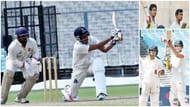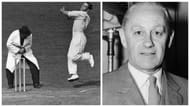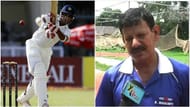Cricketers can decide to attempt comebacks into the professional sport for a variety of reasons, but the outcome of it can be classified into two broad possibilities – a hero’s return, or a humiliating walk back from the stadium with tail between legs. As can be seen through the comebacks of these following individuals, a lot can happen when a comeback is attempted.
Retired Australia captain Michael Clarke is currently attempting a comeback in the shorter formats, while a former India international-turned-politician very recently turned heads on his return to the field.
Here are the diverse possibilities of what a cricketer might face on a comeback trail, and the diverse motivations that can be found to make such an attempt:
Javagal Srinath
One of the most storied comebacks in Indian cricket is that of Javagal Srinath, who answered his country’s call leading up to the memorable 2003 World Cup campaign. In June 2002, Srinath expressed his desire to hang up his boots, in the aftermath of a tour of the West Indies towards the end of which he had looked out of steam.
Young pacers Zaheer Khan and Ashish Nehra were making a splash in international cricket, and Srinath was snubbed for a few subsequent series. However, Chief Selector Brijesh Patel and captain Sourav Ganguly were among those who felt that the pace attack missed Srinath’s leadership, and tried to persuade him to rethink his retirement.
As if to prove a point, Srinath took four wickets in seven balls including a hat-trick, playing for Leicestershire in the county season. The 33-year-old was brought back into the international fold in the final of the 2002 Champions Trophy. His subsequent run of form made it look like he had never been out of the side – he took 18 wickets in a 2-5 series defeat to New Zealand in January 2003, he captured 16 wickets in the World Cup that followed, and formed the core of the bowling attack as India progressed to the final.
Until the semi final, his bowling average had been 17.62 with an economy of 3.48. He finally bowed out after the World Cup, at 8th place on the ICC Player rankings – no Indian fast bowler has gone out of the game before or after at such a high.
Martin Crowe
In 2011, legendary Kiwi batsman Martin Crowe made a sensational announcement that he would attempt to stage a comeback to first class cricket at the age of 48, saying that he wanted motivation to get fit and to also knock off the remaining 392 runs required for him to touch the magic figure of 20,000 FC runs. He had said then, "Hey! If Ganguly can do it, anyone can do it!" Crowe had retired from international cricket in 1994, citing a bad knee.
For five months, Crowe was on a comeback trail, and he assumably found the motivation he wanted, perfecting his batting in the nets. However, his comeback match turned out to be a huge anti-climax. Three balls into his innings while batting for Cornwall against Parnell, he pulled a thigh muscle while attempting a single, and was forced to retire hurt. “So three balls into my first premier match back, it's over,” he said with more than just a tinge of regret in a letter he sent out to media outlets. "I said from the start it would end in tears.”
It can be hoped Crowe had found joy in his attempted comeback though, because an even crueller blow was about to come. The next year, he was diagnosed with lymphoma.
Laxmi Ratan Shukla
This Bengal all-rounder and Minister of State for sports, youth affairs and public works department, has always been a colourful character, and he has turned heads on his comeback match recently. If the sight of a State Minister playing competitive cricket at the highest level was an oddity, it was even more to see that Minister blasting a 19-ball 50, with three sixes that landed in far parts of the stadium.
The 35-year-old missed last season with an injury, and announced his retirement in December 2015, saying that he lacked the motivation that had pushed him for two decades. Thw former international cricket then took the plunge into politics, also winning in the Assembly elections.
In the P Sen Trophy semi-final, the last CAB tournament of the season, Minister Shukla padded up again, and not with the intention to just make up the numbers. He took 1 wicket in 6 overs, but got into beast mode with the bat in hand. With Wriddhiman Saha at the other end also launching into a scathing attack, the two batsmen brought up the target of 198 in 13 overs, at an unbelievable strike rate of 14.9 runs per over.
Like any good minister, however, Shukla cited previously scheduled engagements as the reason why he would not play in the final.
Gubby Allen
Allen, one of the most iconic names in cricket history and the most colourful characters in the sport’s firmament, made his England debut in 1930 at the age of 28, and made a significant mark when he refused to toe his team’s Bodyline tactics on the 1932-33 tour to Australia but still emerged as the most prolific bowler of that series.
Allen worked for military intelligence during the years of war and when cricket resumed after the 2nd World War, Allen was 43 – well past the prime of fast bowlers. He was one of the most senior players still up for the challenge though, and he found himself named captain of the England side to tour West Indies in 1947.
The tour was ill-fated for Allen, however, as he pulled a muscle while skipping in training on the boat out. He clashed with other senior players on the matter of staying out late at night, and missed matches through injury. Len Hutton was sent as cover in the middle of the tour.
Allen remains the oldest new ball bowler in Test history, at the age of 45, but he confessed to having regretted agreeing to lead the England side on this tour. In three Tests, he scored 94 runs and took five wickets, before being dropped for the last match.
Utpal Chatterjee
One of the most touching episodes from recent years of Indian domestic cricket is from the 2004 Ranji Trophy season, when an India captain and a retired bowler both answered their state team’s call, successfuly fighting off relegation in the last group match of the season.
It had been just four days since India captain Sourav Ganguly had returned from a tour of Bangladesh. It had been one whole season since the 40-year-old Utpal Chatterjee had hung up his boots, on a poignant mark of 499 FC wickets.
The situation called for all the resources Bengal could muster, however. They had been undisputed champions of the East Zone in previous years, but with the introduction of the Elite-Plate league structure with promotions and relegations, they found themselves looking down a barrell, locked in a loser-loses-all battle with Madhya Pradesh in the final group match.
Ganguly was on song with the ball, as three early blows reduced MP to 16/3. Naman Ojha and Abbas Ali consolidated the innings, taking the first innings score to 392. It was Ojha who was Utpal’s 500th FC victim, as Bengal’s most successful bowler ever reached a landmark very few bowlers have in India.
It was clear that an outright result was out of the picture, and that Bengal needed a first innings lead to stave off relegation for the season. Sourav Ganguly scored a patient century, with help from Devang Gandhi and Laxmi Ratan Shukla. However, with 95 runs still to get on the final day, Bengal’s tail was exposed, and it was Utpal Chatterjee who walked out to join Shukla in the middle.
The next ninety minutes were an excruciating phase, as Utpal grimly stood his ground and Shukla hit his shots at the other end. Bengal were all out for 397, five runs ahead of MP and safely in the Elite Division.
One final session of play was possible, in which Utpal took the only two wickets to fall, ending his career at 504 FC wickets and 400 Ranji wickets. This sensational win must have inspired Bengal teams to come, as they reached the final of the Ranji Trophy for the next two editions.
Brand-new app in a brand-new avatar! Download Cric Rocket for fast cricket scores, rocket flicks, super notifications and much more!




